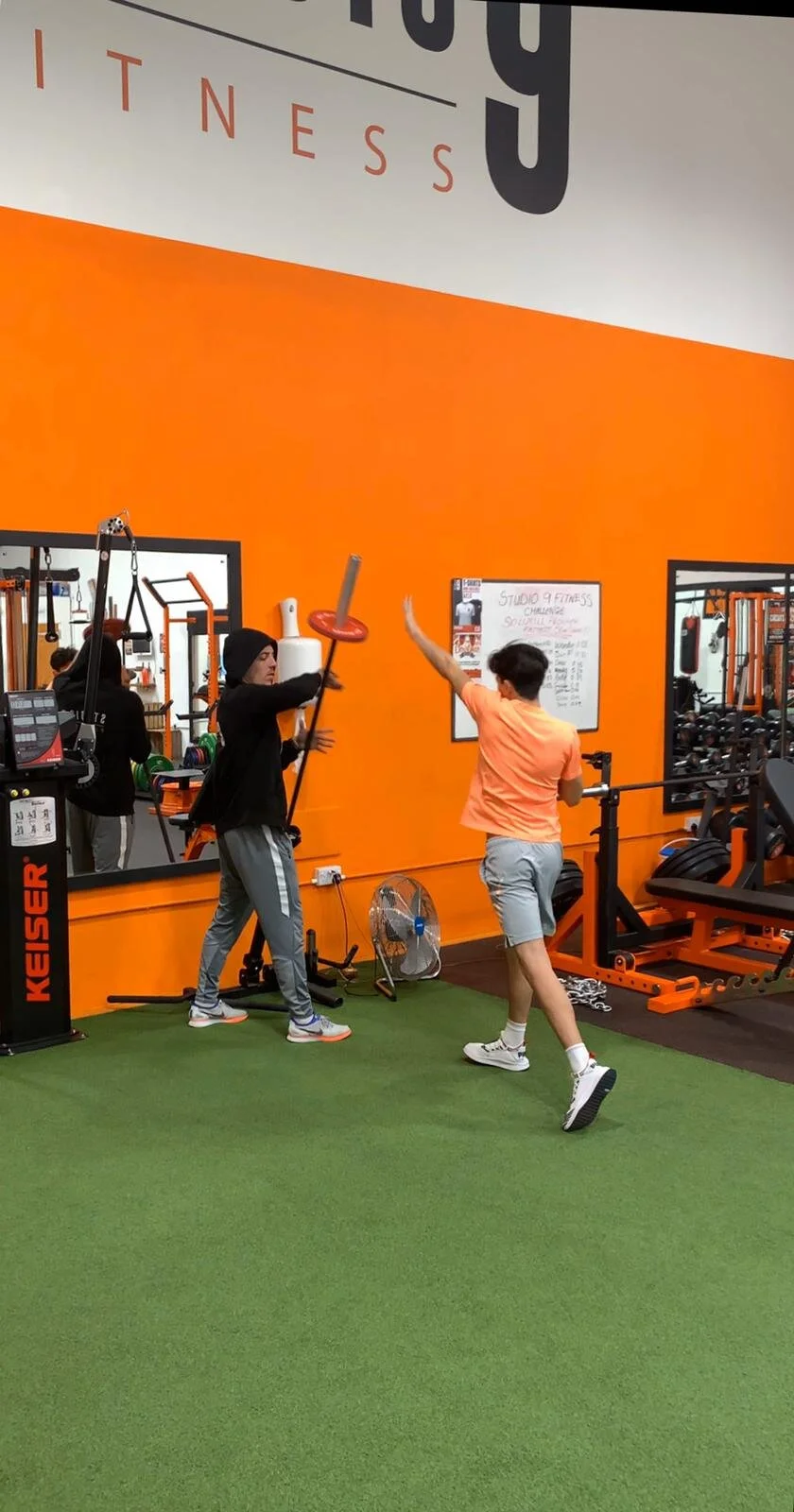This Article is Sponsored by Studio 9 Fitness. The Premier Sports Performance Facility in Wokingham, Berkshire.
Power from a punch is generated from the muscles of the arm – right?
Wrong.
The relative contribution of the arm muscles has been found to be only 24% as compared with 37% and 39% for the trunk and legs and as with most other sports it is the coordinated, sequential summation of forces that ultimately dictate the impact of the force delivered (M.B. Wallace, S. Flanagan. Boxing: resistance training considerations for modifying Injury Risks, 1999).
Biomechanical analysis of one of the most commonly used techniques in boxing; “the straight rear- cross” reveal that most of the power is generated by a movement that is a combination of ankle plantar flexion, knee and hip extension, trunk rotation and arm extension, often termed “Kinetic Linking”.
Research by Wallace and Flanagan 1999 clearly identifies the importance of leg extension at the ankle, knee and hip actions involving the gastrocnemius, rectus femoris and biceps femoris muscles are required if the boxer is to deliver forceful punch techniques. Maximum punching force and speed starts with the recruitment of muscles in the legs and a pathway of force travels through the human body to the point of impact (R. Dyson, M.Smith, C.Martin, L.Fenn - Muscle Recruitment During Rear hand Punches Delivered at Maximal Force and Speed by Amateur Boxers, 2006).
So now we know where force is generated from, we need to know how to generate that force!
To deliver hard, fast punches, the lower body must produce a large amount of force extremely quickly. The core and hip muscles must be strong enough to transfer this force through the mid-section and to the shoulders and then arms, which must be mobile enough to efficiently deliver the fist towards the target. This must all be performed with solid technique.
Tightness, weakness or dysfunction at different parts of the kinetic chain can negatively affect force transmission, and can also increase the risk of injury as other areas are forced to compensate.
Boxers should focus on improving lower body rate of force development, hip mobility, core strength, rotational/shoulder mobility, and most importantly technique to improve the effectiveness of their kinetic chain.
Key points for the strength and conditioning programme of a boxer:-
· Lower body strength training is particularly important to generate force through the ground
· Efficient transfer of power from the lower body to the upper body occurs at the abdominals
· The abdominals’ role in this force transference provides an insight into how they should be trained - primarily with anti-rotation/anti-extension exercises to train stiffness in the region
· As the force is transmitted to the upper body, a powerful contraction of the chest, shoulder and triceps muscles is coupled by a contraction of the pulling muscles on the opposite side to create shoulder flexion and internal rotation to deliver the impact
· As the lower body must overcome the inertia of the ground to begin generating momentum, heavier loads are perhaps more appropriate
· For the upper body the focus is on applying force to the target as rapidly as possible, and as such, lighter loads moved more quickly may have a greater carryover to functional performance
· Include exercises that utilise multiple segments of the kinetic chain to build functionality into the movement pattern
We are built not born.
www.builtnotborn.co.uk
Royston Barney-Smith
Two Time European Champion

